News Articles
It's great
April 30, 2021
It's great. It's blue...sort of. It's a heron. It's the Great Blue Heron! In this episode of "Museum Minute", VMNH Educator Terri Robertson highlights the Great Blue Heron, a bird native to Virginia and a specimen of which can be found inside the museum's Lee & George W. Lester, II How Nature Works gallery! ABOUT MUSEUM MINUTE The Virginia Museum of Natural History has a spectacular assortment of displays within its exhibit galleries! Some displays are unforgettable, while others don't always get the attention they deserve. Through the original series "Museum Minute", museum educators highlight various displays throughout the exhibit galleries, while providing intriguing facts you may not have known. "Museum Minute" is ...
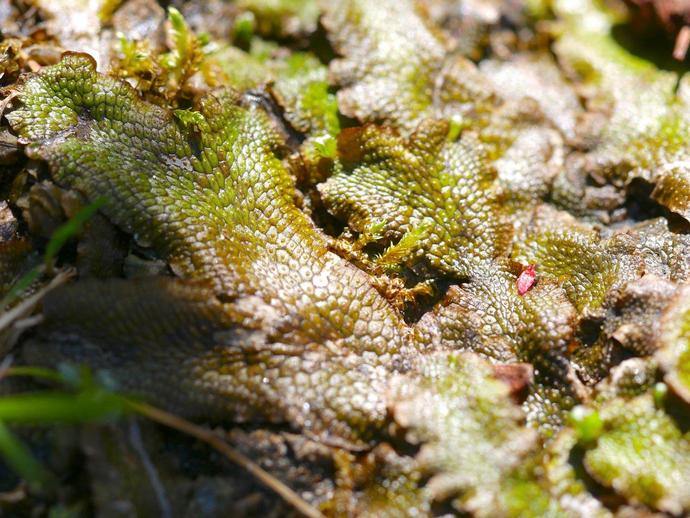
It's time for today's edition of #BenInNature presented by our friends at Carter Bank & Trust!
April 30, 2021
It's time for today's edition of #BenInNature presented by our friends at Carter Bank & Trust! Let's close out the week with a cool plant with an unappealing name: liverwort! Liverworts belong to the division Marchantiophyta, and there are about 8,000-9,000 different species, so we'll just leave this one at "liverwort" and move on. Liverworts sort of resemble a flattened moss, and they're one of our most ancient plants. They began as algae that transitioned to land during the Devonian Era about 400 million years ago, long before dinosaurs roamed the Earth. In fact, there is some debate among biologists as to whether liverworts are their own separate family of plants that split off from everything else hundreds of ...
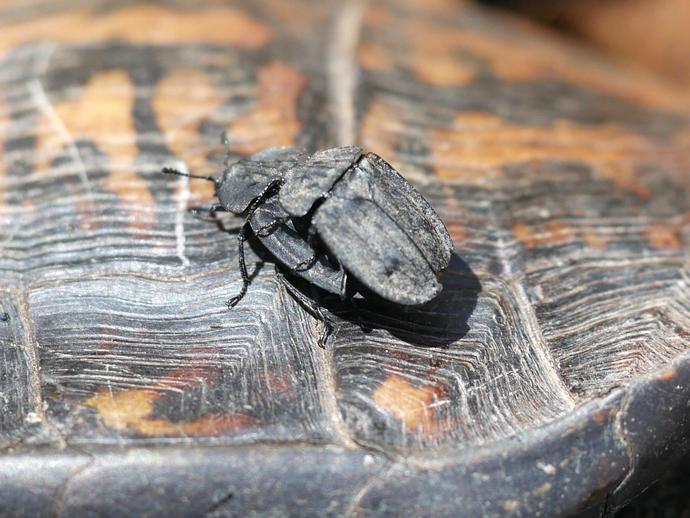
It's time for the Thursday edition of #BenInNature presented by our friends at Carter Bank & ...
April 29, 2021
It's time for the Thursday edition of #BenInNature presented by our friends at Carter Bank & Trust! Today's nature post is a bit of a gross one, but I feel it's important to highlight even the most gag-inducing members of the natural world since they usually provide some important services for us all. Case in point: Oiceoptoma inaequale, the ridged carrion beetle! Back in late March, I photographed these beetles while exploring in Ridgeway with VMNH Associate Curator of Invertebrate Zoology Dr. Kal Ivanov and VMNH Myriapodologist (millipede expert) Dr. Jackson Means. It seems a woodland box turtle had met an unfortunate end, and these ridged carrion beetles had arrived on the scene to do their thing. So what do ridged ...
In today's episode of "Tales of Ancient Life", Assistant Curator of Paleontology Dr
April 28, 2021
In today's episode of "Tales of Ancient Life", Assistant Curator of Paleontology Dr. Adam Pritchard puts the focus back on the ancient whale Eobalaenoptera harrisoni and some of its bones found inside the museum's scientific collections! Special thanks to Carter Bank & Trust (www.cbtcares.com) and Boxley Materials Company (www.boxley.com) for helping make this episode possible! ABOUT TALES OF ANCIENT LIFE Our planet has an incredible story to tell and VMNH Assistant Curator of Paleontology Dr. Adam Pritchard helps share it through his original video series, "Tales of Ancient Life". Dr. Pritchard uses spectacular fossils and other scientific specimens from the museum's paleontology collections to highlight the wonders of ...
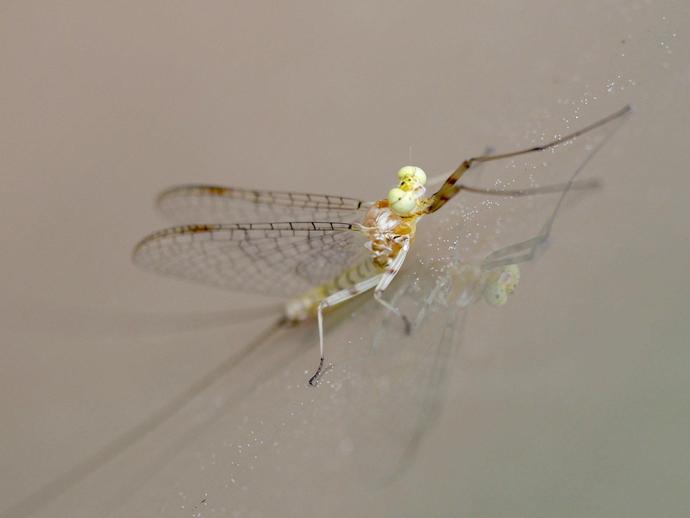
It's time for the Wednesday edition of #BenInNature presented by our friends at Carter Bank & ...
April 28, 2021
It's time for the Wednesday edition of #BenInNature presented by our friends at Carter Bank & Trust! Here's a nature post for VMNH Assistant Curator of Archaeology and Master Fly Fisherman Dr. Hayden Bassett: a mayfly! This particular mayfly belongs to the family Heptageniidae, also known as the flatheaded mayflies, and it is most likely a member of the genus Epeorus, according to VMNH Executive Director Dr. Joe Keiper. There are more than 600 species just in the family Heptageniidae, and believe it or not, there are more than 3,350 known species of mayflies worldwide! As juveniles, mayflies are completely aquatic. These juveniles are known as "naiads" or "nymphs," and if you find them in your stream, it means it's ...
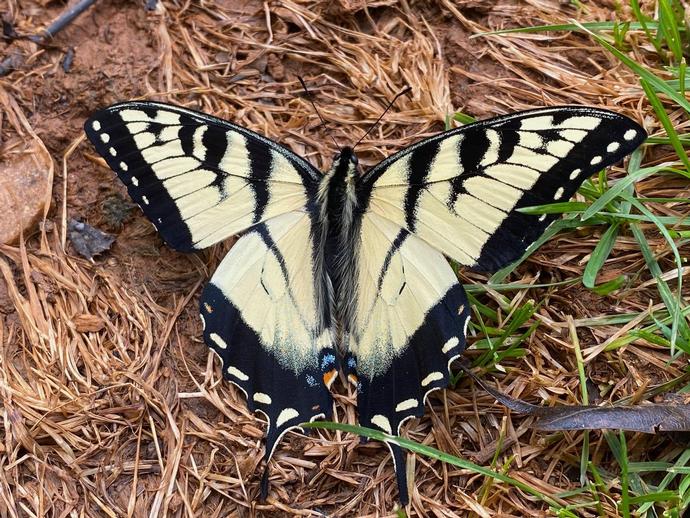
It's time for the Tuesday edition of #BenInNature presented by our friends at Carter Bank & Trust!
April 27, 2021
It's time for the Tuesday edition of #BenInNature presented by our friends at Carter Bank & Trust! Spring has arrived and the butterflies are on the wing! The eastern tiger swallowtail butterfly (Papilio glaucus) is one of our most common butterflies in Virginia, and it's also our state insect! It's also the state butterfly of Alabama, Delaware, Georgia, North Carolina, and South Carolina. I pity any butterflies that go up against this guy in a popularity contest! The eastern tiger swallowtail is a common sight in the eastern half of the U.S., and it can be spotted from spring all the way through fall. These butterflies have two to three broods per year, and they overwinter inside the chrysalis in areas with harsh ...
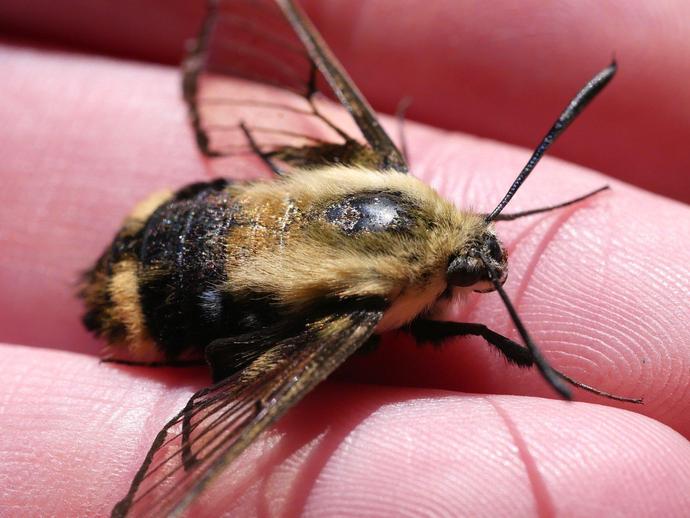
It's time for today's edition of #BenInNature presented by our friends at Carter Bank & Trust!
April 26, 2021
It's time for today's edition of #BenInNature presented by our friends at Carter Bank & Trust! #BenInNature superfans may recognize this species from a post last year, but it's cool enough that I think it's worth looking at again (especially since I got a photo of one perched on my hand like a Disney princess). This is Hemaris diffinis, the snowberry clearwing! While they're at rest, these critters look a lot like carpenter bees, and while they're flying, they look a lot like hummingbirds. However, the snowberry clearwing is actually a moth, and they're popularly referred to as "hummingbird moths!" Unlike most moths, this species is active during the day and can often be seen flitting from one flower to the next (if ...
WE'RE HIRING!
April 26, 2021
WE'RE HIRING! - Visitor Services & Events Manager The Visitor Services & Events Manager will provide direct management of the museum's Box Office and Museum Store, while serving as the lead staff coordinator for museum events.
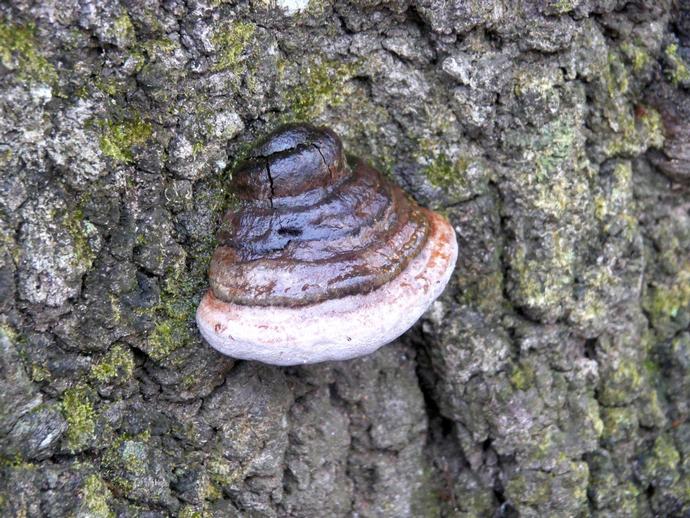
We're reaching into the archives for today's #BenInNature update presented by our friends at ...
April 25, 2021
We're reaching into the archives for today's #BenInNature update presented by our friends at Carter Bank & Trust! The following post was originally published on June 16, 2020. Shelf fungi, also known as polypores, are not your ordinary mushroom. They fulfill the same basic job as a mushroom -- they produce and disperse spores to continue the species -- but unlike your typical mushroom, they frequently have a woody or leathery texture and some species can live for years! The name "polypore" stems from the fact that these mushrooms don't have gills underneath the cap, they have tiny pores. If the shelf fungus is the woody variety and resembles a horse's hoof (like this one does), the structure is commonly called a "conk." ...
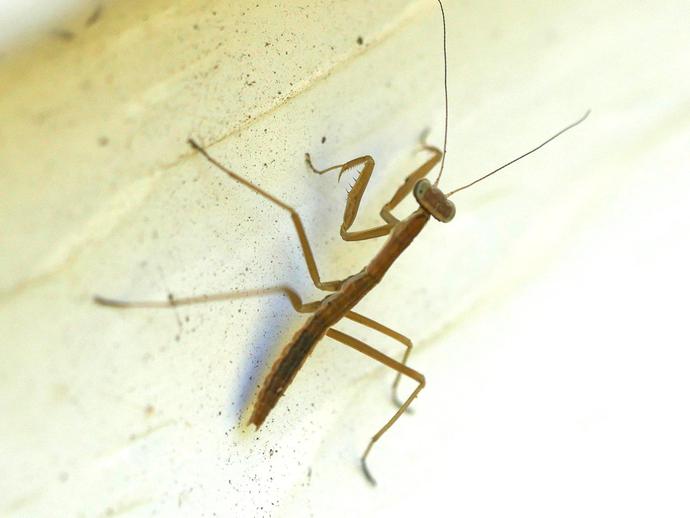
We're reaching into the archives for today's #BenInNature update presented by our friends at ...
April 24, 2021
We're reaching into the archives for today's #BenInNature update presented by our friends at Carter Bank & Trust! The following post was originally published on June 15, 2020. Keep an eye peeled in the spring, because you're liable to see some tiny praying mantids! This mantid is probably a Carolina Mantis (Stagmomantis carolina), according to VMNH Associate Curator of Invertebrate Zoology Dr. Kal Ivanov. This species is fairly common and can be found throughout much of North America, Central America, and South America. It's often difficult to identify the Carolina mantis by color alone, because this species can vary from brown to green to gray. When the juveniles molt (shed their old exoskeleton), they adjust their ...
Museum exhibits are an essential element of the visitor experience and your support helps make ...
April 23, 2021
Museum exhibits are an essential element of the visitor experience and your support helps make them possible! Throughout April, the museum is conducting the 2021 Spring Fund Drive initiative as a result of being unable to host the annual, in-person "Grapes & Grains" fundraising gala - the VMNH Foundation's largest fundraising event each year - due to the ongoing health restrictions. As the museum looks to continue maintaining its current exhibits, while adding new displays throughout the museum for all visitors, your support matters now more than ever. We ask that you consider taking part in this fundraising campaign in support of mission-based museum programs in Research, Education and Exhibits. As a thank you for your ...
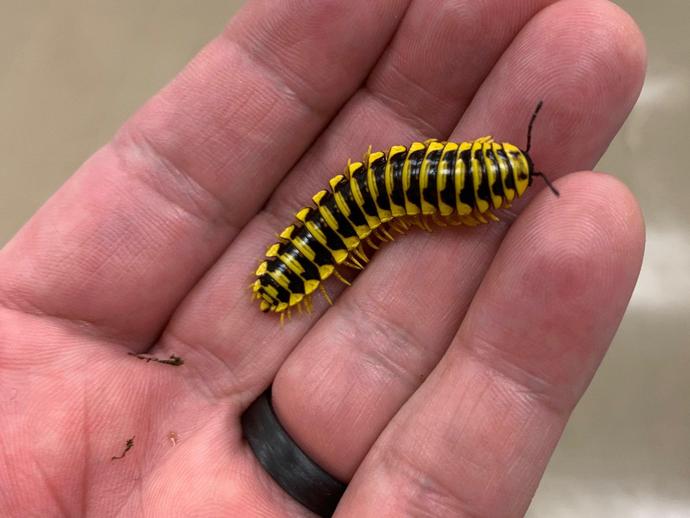
Say hello to Apheloria polychroma, commonly referred to as "The Colorful Cherry Millipede"!
April 23, 2021
Say hello to Apheloria polychroma, commonly referred to as "The Colorful Cherry Millipede"! Apheloria polychroma, which translates to "millipede of many colors", was described by VMNH Myriapodologist Dr. Jackson Means and colleagues in 2018. This specimen was recently found at Hanging Rock Day Use Area in Scott County, Virginia.
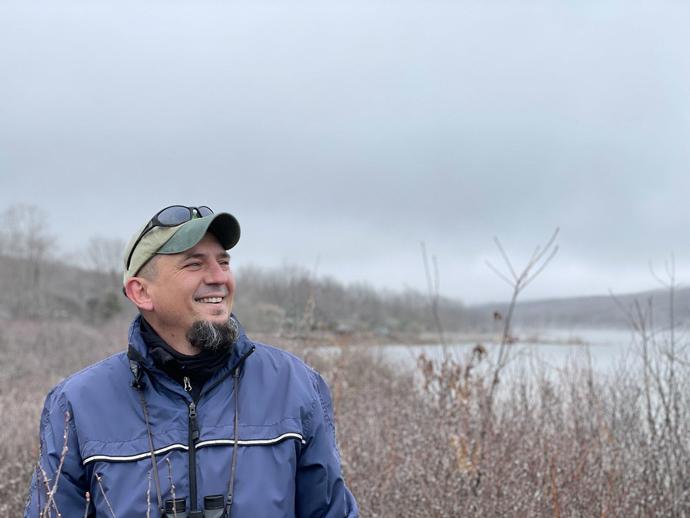
April is the time to collect millipedes in Virginia!
April 23, 2021
April is the time to collect millipedes in Virginia! On April 21, VMNH Associate Curator of Recent Invertebrates Dr. Kal Ivanov and VMNH Myriapodologist (millipede expert) Dr. Jackson Means traveled to the state's westernmost reaches in hopes to collect two known, but as-of-yet undescribed, species of flat-backed millipedes in the genus Nannaria (a group that Dr. Means recently revised). Despite the inclement weather forecasted for that day, the duo decided to continue as planned with intended stops at Laurel Bed Lake in Russell County and Hanging Rock Day Use Area in Scott County. The 14 hours of fieldwork that followed may sound like much, but from the beautiful sunrise over the Blue Ridge Mountains, the steady rain in ...
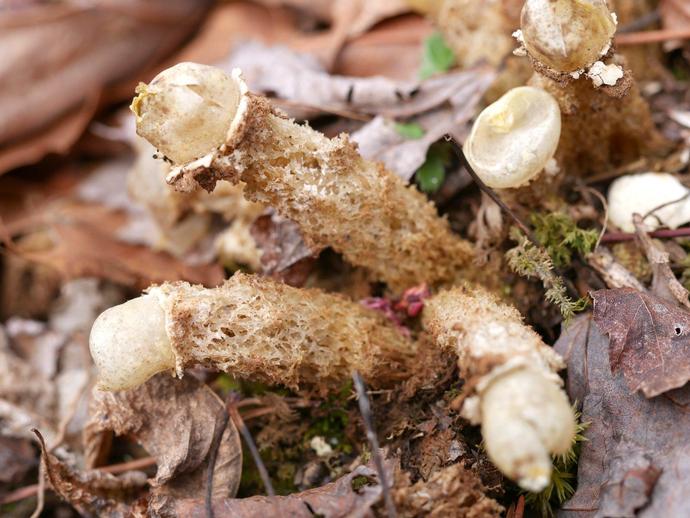
It's time for today's edition of #BenInNature presented by our friends at Carter Bank & Trust!
April 23, 2021
It's time for today's edition of #BenInNature presented by our friends at Carter Bank & Trust! This is Calostoma lutescens, also known as the lattice puffball fungi, and I'm making a conscious choice to avoid any jokes about its appearance! The fungi in the photograph are fairly dried out, but when fresh, they have a yellowish color and feature a red dot at the top of the spore case. These mushrooms can be found from Massachusetts to Arkansas, but they're most common in the southern Appalachians. Lattice puffballs are "mycorrhizal" with oak trees. This means that the fungi have a mutually beneficial relationship with oak trees. The fungi's mycelium (basically the mushroom equivalent of roots) surround the roots of the ...
VMNH Myriapodologist Dr
April 23, 2021
VMNH Myriapodologist Dr. Jackson Means, along with Dr. Derek Hennen and VMNH Research Associate Dr. Paul Marek, recently published a revision of the Nannaria minor species group in a scientific paper published in ZooKeys, a peer-reviewed open-access journal. The paper, which used many of the specimens from the museum's millipede collection, was a continuation of a project that was started by the late Dr. Richard Hoffman in the 1960's. Click or tap the link to read the paper today!
Ah, snakes
April 23, 2021
Ah, snakes. Love 'em or hate 'em, they are incredibly interesting animals with many unique characteristics! In this episode of "Museum Minute", VMNH Education Manager Christy Deatherage highlights the hog-nosed snake, which is native to Virginia and a specimen of which can be found inside the museum's Lee & George W. Lester, II How Nature Works gallery! ABOUT MUSEUM MINUTE The Virginia Museum of Natural History has a spectacular assortment of displays within its exhibit galleries! Some displays are unforgettable, while others don't always get the attention they deserve. Through the original series "Museum Minute", museum educators highlight various displays throughout the exhibit galleries, while providing intriguing facts ...
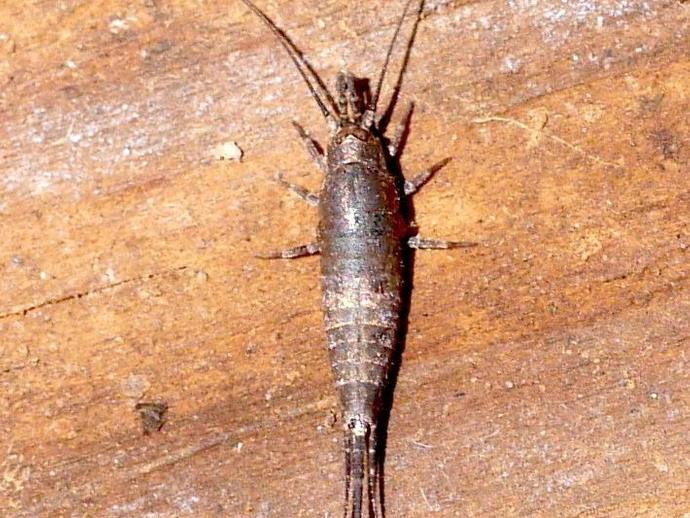
Better late than never!
April 22, 2021
Better late than never! Here is today's edition of #BenInNature presented by our friends at Carter Bank & Trust! Here's an unusual critter: this is a jumping bristletail, and according to VMNH Associate Curator of Invertebrate Zoology Dr. Kal Ivanov, it's most likely Machiloides banksi, a type of rock bristletail. So what exactly is a bristletail? It's a very primitive insect! Bristletails belong to the order Archaeognatha, and they first appeared in the Middle Devonian period about the same time as arachnids (spiders and relatives) first appeared. The Devonian began about 420 million years ago and ended about 360 million years ago. This was the period when life first began migrating from the oceans to dry land; the ...
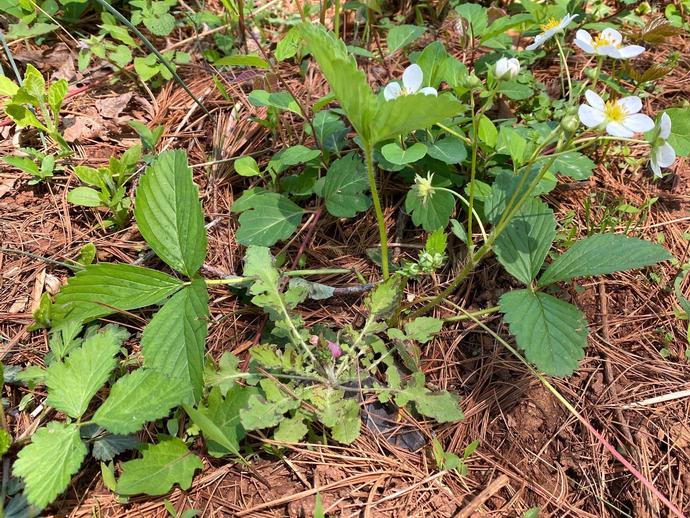
It's time for today's edition of #BenInNature presented by our friends at Carter Bank & Trust!
April 21, 2021
It's time for today's edition of #BenInNature presented by our friends at Carter Bank & Trust! Here's one of my favorite plants to find out in the wild: Fragaria virginiana, better known as wild strawberry! Wild strawberries are in bloom right now (as you can see from the photos), which means the fruit should be ready to pick in May or June (assuming I can beat the critters to them because all kinds of animals love wild strawberries). Fragaria virginiana is one of two species that were hybridized to create the modern garden strawberry that we buy at the store (the other species was Fragaria chiloensis, a Chilean strawberry species). As a kid, I remember getting excited when I would find wild strawberries. While the ...
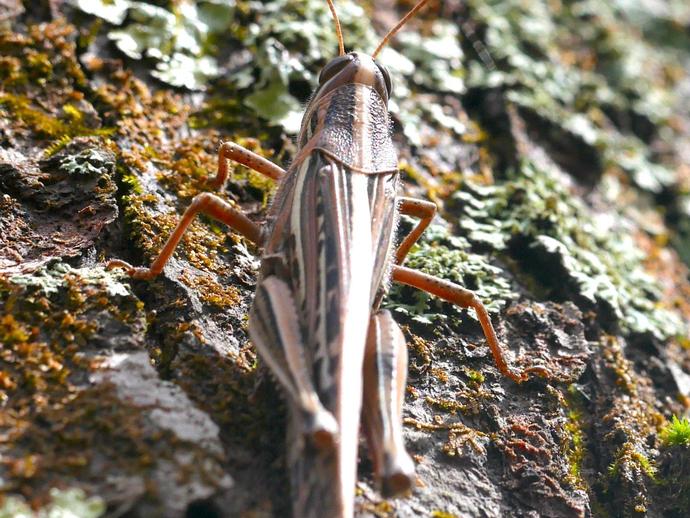
It's time for today's edition of #BenInNature presented by our friends at Carter Bank & Trust!
April 20, 2021
It's time for today's edition of #BenInNature presented by our friends at Carter Bank & Trust! The American bird grasshopper (Schistocerca americana) is the largest grasshopper species in North America! The females of the species can reach a length of 5.5 centimeters, while the males top out at around 4.5 centimeters. You can find these grasshoppers in the eastern U.S., Mexico, and the Bahamas. I spotted this grasshopper almost a month ago, and you're not going to find another grasshopper close to this size in early spring in Virginia. The reason is that unlike many grasshoppers, this species overwinters as an adult rather than in the egg! These grasshoppers have two generations per year, and the female lays 60-80 eggs ...
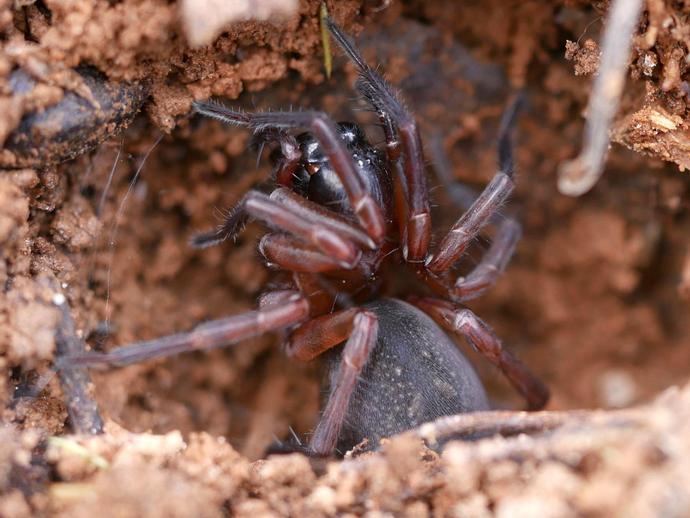
It's time for today's edition of #BenInNature presented by our friends at Carter Bank & Trust!
April 19, 2021
It's time for today's edition of #BenInNature presented by our friends at Carter Bank & Trust! My apologies to the arachnophobes out there, but spiders are pretty fascinating! This spider belongs to the genus Wadotes, which contains 11 different species, all of them localized to North America. Wadotes are funnel weaver spiders. Funnel weavers build a horizontal web in the basic shape of a funnel and hide in the narrowest part. Their webs are very dense, and while they're not sticky, they contain tiny strands of silk that can easily entangle any insect unfortunate enough to land on the web. When the insect is struggling to escape, the funnel weaver spider senses the vibrations and rushes out to bite its prey and then drag ...
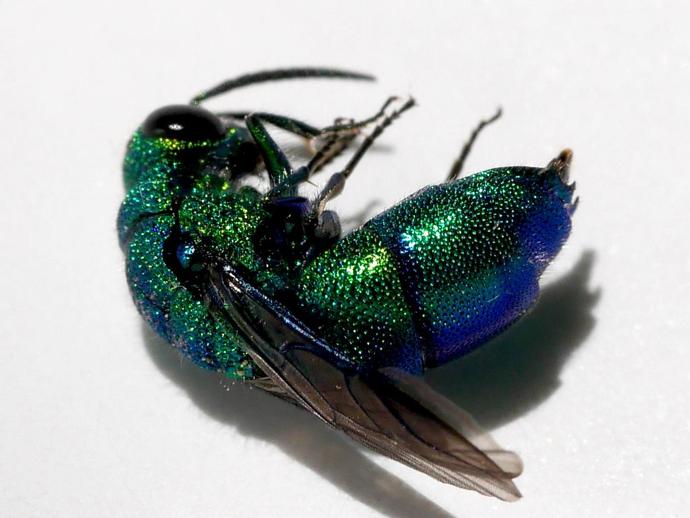
We're reaching into the archives for today's #BenInNature update presented by our friends at ...
April 18, 2021
We're reaching into the archives for today's #BenInNature update presented by our friends at Carter Bank & Trust! The following post was originally published on June 14, 2020. This beautiful wasp is a member of the family Chrysididae, also known as cuckoo wasps, emerald wasps or jewel wasps. And despite how it looks, it's not dead! These wasps have concave abdomens and can curl up into a ball when they feel threatened (by a camera for example). You won't find a big, buzzing nest of these wasps anywhere; they're solitary wasps, and they're also parasites, which is how they get the common name "cuckoo wasp." Just like the cuckoo family of birds, they lay their eggs in the nests of unrelated host species! I generally ...
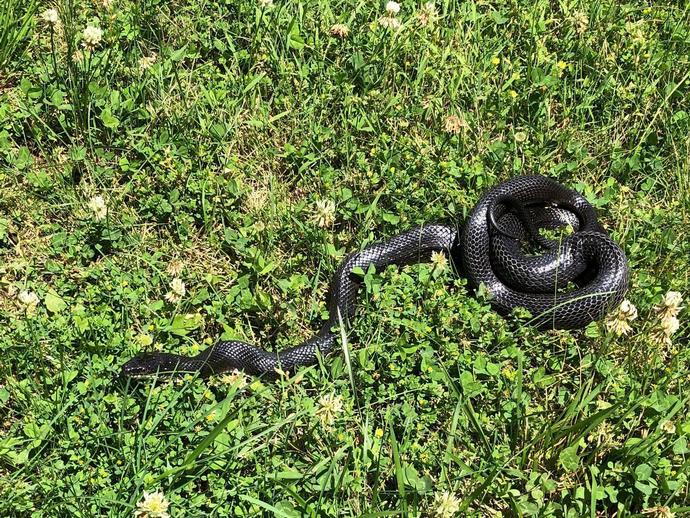
We're reaching into the archives for today's #BenInNature update presented by our friends at ...
April 17, 2021
We're reaching into the archives for today's #BenInNature update presented by our friends at Carter Bank & Trust! The following post was originally published on June 11, 2020. This is Pantherophis alleghaniensis, commonly known as the eastern ratsnake. The eastern ratsnake and the black racer are two similar-looking snakes that are often lumped together as "black snakes." Eastern ratsnakes are generally duller, while black racers have a glossier appearance. Also, eastern ratsnakes generally have ridged or "keeled" scales while racers have smooth scales. A lot of people hate both varieties of snake (and snakes in general), but these snakes do a great job of keeping rodent populations in check. So if you don't like having ...
It's always a good time to talk about polar bears!
April 16, 2021
It's always a good time to talk about polar bears! VMNH Educator Terri Robertson highlights our arctic dwelling friends in this week's episode of "Museum Minute"! ABOUT MUSEUM MINUTE The Virginia Museum of Natural History has a spectacular assortment of displays within its exhibit galleries! Some displays are unforgettable, while others don't always get the attention they deserve. Through the original series "Museum Minute", museum educators highlight various displays throughout the exhibit galleries, while providing intriguing facts you may not have known. "Museum Minute" is made possible thanks to VMNH Corporate Partners Carter Bank & Trust (www.cbtcares.com) and Boxley Materials Company (www.boxley.com).
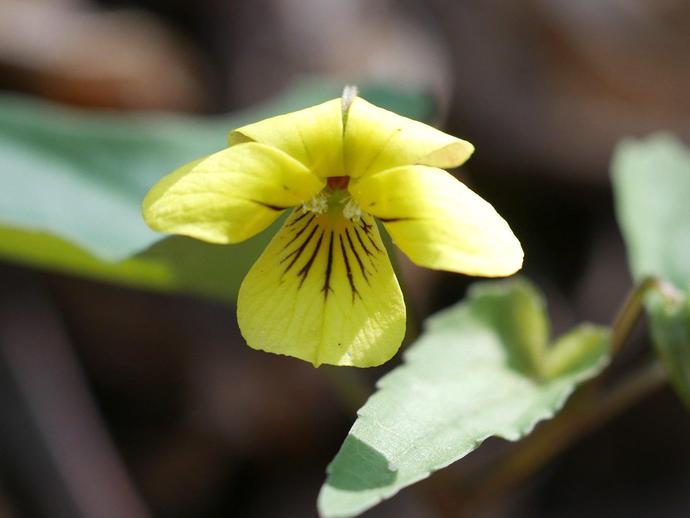
It's time for today's edition of #BenInNature presented by our friends at Carter Bank & Trust!
April 16, 2021
It's time for today's edition of #BenInNature presented by our friends at Carter Bank & Trust! Let's close out the week with one more find from a recent museum trip to the Patrick County home of a good friend of VMNH: Viola hastata, the halberd-leaved yellow violet! This plant is native to the eastern U.S. and blooms from March through May. The flowers look quite similar to the common blue violet or wood violet (Viola sororia), only yellow instead of blue. The halberd-leaved violet seems to prefer higher elevations, however, and it can often be found in open woods and ravines with humus-rich acidic soils and partial shade. This violet gets its name from the halberd, which was a Renaissance-era two-handed pole weapon ...
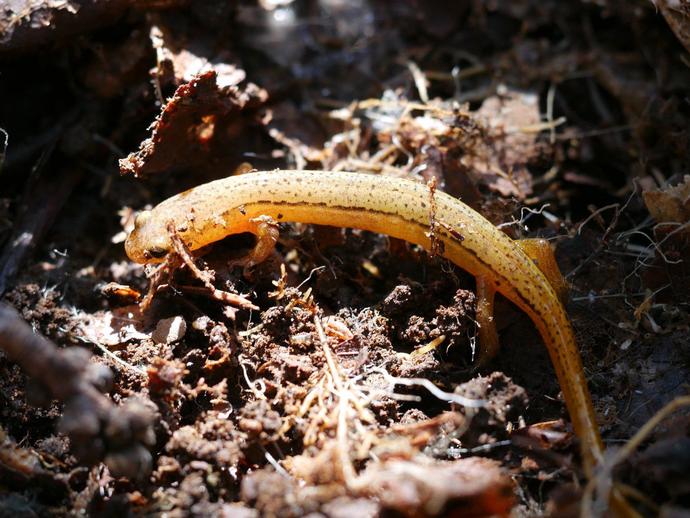
It's time for today's edition of #BenInNature presented by our friends at Carter Bank & Trust!
April 15, 2021
It's time for today's edition of #BenInNature presented by our friends at Carter Bank & Trust! Here's another cool find that museum staff spotted last week at the Patrick County home of a good friend of the museum: Eurycea cirrigera, the southern two-lined salamander! These salamanders are on the small side, topping out at around 12 centimeters in length. They're generally found in temperate forests, swamps, freshwater springs, and near rivers. This particular one was hiding in some leaf litter right next to a small stream. This salamander is one of the more common species you're liable to find in Virginia (although its range doesn't extend into northern Virginia and it's less common in some of the coastal areas of ...
Three dimensional printing enhances the museum's ability to educate audiences of all ages about ...
April 14, 2021
Three dimensional printing enhances the museum's ability to educate audiences of all ages about fossil specimens! In this episode of "Tales of Ancient Life", Assistant Curator of Paleontology Dr. Adam Pritchard demonstrates how the museum's new 3D printing setup can replicate fossils found throughout the world! Special thanks to Carter Bank & Trust (www.cbtcares.com) and Boxley Materials Company (www.boxley.com) for helping make this episode possible! ABOUT TALES OF ANCIENT LIFE Our planet has an incredible story to tell and VMNH Assistant Curator of Paleontology Dr. Adam Pritchard helps share it through his original video series, "Tales of Ancient Life". Dr. Pritchard uses spectacular fossils and other scientific ...
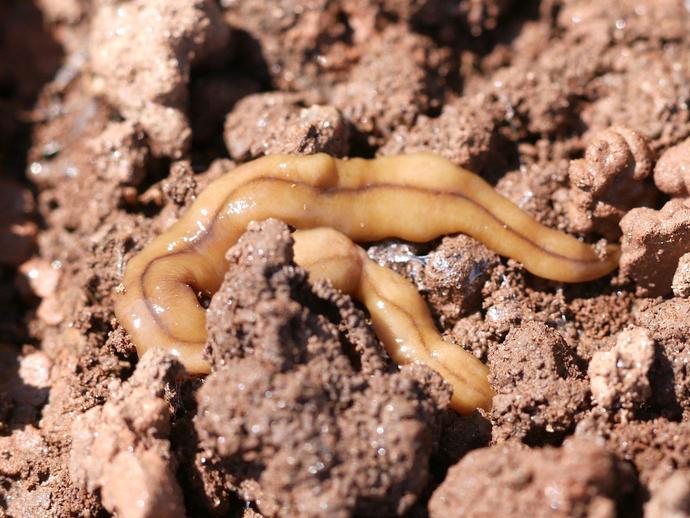
It's time for today's edition of #BenInNature presented by our friends at Carter Bank & Trust!
April 14, 2021
It's time for today's edition of #BenInNature presented by our friends at Carter Bank & Trust! Here's another cool find from the Patrick County home of a friend of the museum that staff visited last week: Bipalium adventitium, the wandering broadhead planarian! First off, we should probably establish what a planarian is, because this critter belongs to a phylum that has never before been featured in a #BenInNature post. This fellow is a member of the phylum Platyhelminthes, also known as flatworms. Flatworms are simple organisms with soft, segmented bodies, and they are bilaterally symmetrical, meaning the left and right sides of their bodies are mirror images of each other. They lack internal body cavities and they ...
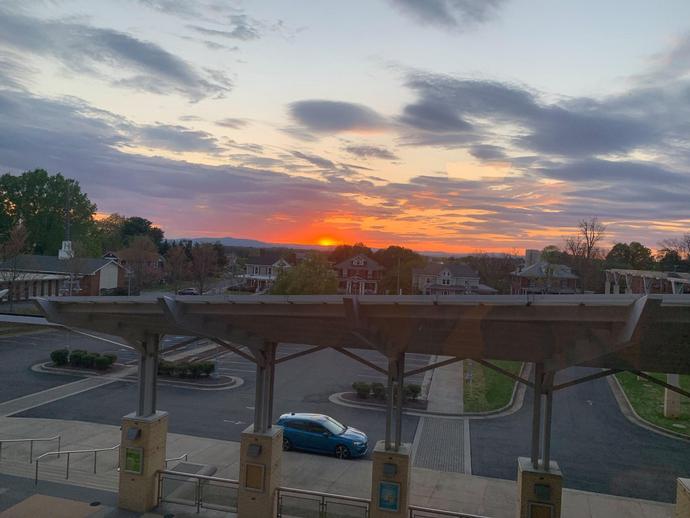
The sun setting behind the Blue Ridge Mountains is providing quite a view from the museum this ...
April 13, 2021
The sun setting behind the Blue Ridge Mountains is providing quite a view from the museum this evening.
Speaker: Dwayne Jones, Director of Waynesboro Parks & Recreation Department
April 13, 2021
Speaker: Dwayne Jones, Director of Waynesboro Parks & Recreation Department
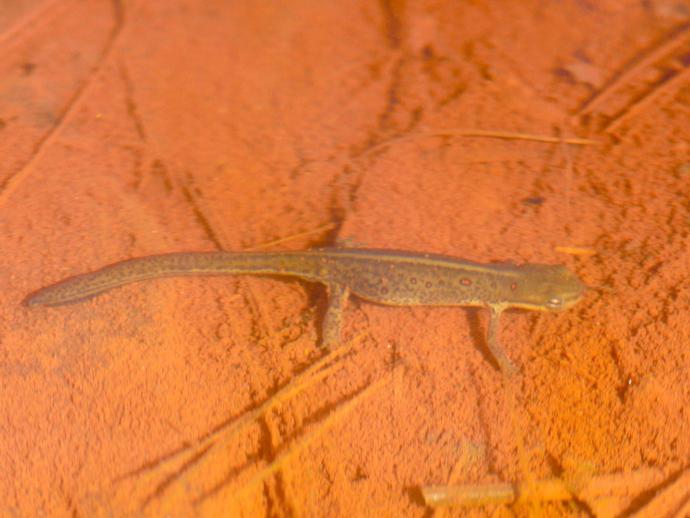
It's time for today's edition of #BenInNature presented by our friends at Carter Bank & Trust!
April 13, 2021
It's time for today's edition of #BenInNature presented by our friends at Carter Bank & Trust! This week we're looking at cool critters that museum staff recently spotted at the Patrick County home of a good friend of the museum. This little guy is Notophthalmus viridescens, better known as the eastern newt! If the picture looks a little odd, it's because the subject was underwater when it was taken. If you're a #BenInNature superfan (and I know there are literally tens of you out there), the eastern newt might ring a bell. In a couple of previous posts, I've highlighted the "red eft" stage of this newt's lifecycle. These newts have three stages of life: as larvae, they're completely aquatic and have gills. In the red ...
Since March 2020 ...
April 12, 2021
Since March 2020, the museum's Education team has been busy developing new and exciting virtual programming opportunities in order to continue reaching audiences no longer able to visit the museum due to the ongoing health situation. However, this success would not have been possible without the support of all of our museum friends and constituents! Throughout April, the museum is conducting the 2021 Spring Fund Drive initiative as a result of being unable to host the annual, in-person "Grapes & Grains" fundraising gala - the VMNH Foundation's largest fundraising event each year - due to the ongoing health restrictions. As the museum looks to continue offering its stellar lineup of virtual programming, while also gradually ...

This one is especially for our fans in WAYNESBORO and the surrounding region!
April 12, 2021
This one is especially for our fans in WAYNESBORO and the surrounding region! Join us at the historic Wayne Theatre tomorrow at 7pm in downtown Waynesboro, when guest presenter Dwayne Jones, Director of Waynesboro's Department of Parks and Recreation, presents "Parks, Trails & Events: Waynesboro's Next Economic Engine"! If you can't attend, you can watch the presentation live on the museum's Facebook page or the Facebook page of the Wayne Theatre! ABOUT THE PRESENTATION The city of Waynesboro is on the verge of an outdoor economic boom! Sitting at the doorstep to the iconic Blue Ridge Parkway and Shenandoah National Park, the city of Waynesboro is perfectly poised to benefit from the 1000's of travelers passing by ...
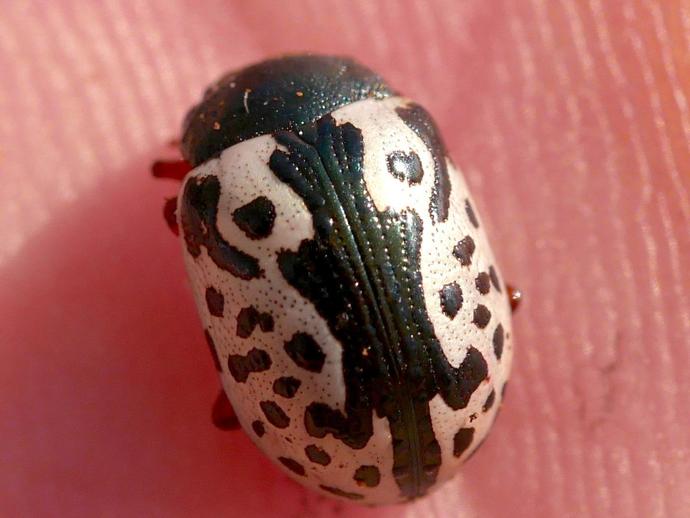
It's time for the Monday edition of #BenInNature presented by our friends at Carter Bank & Trust!
April 12, 2021
It's time for the Monday edition of #BenInNature presented by our friends at Carter Bank & Trust! Last week, I joined several of my colleagues on a trip to the home of a long-time friend of VMNH. We spent the morning exploring her property to see what kind of cool critters we could spot, and this week, I've decided to highlight some of my favorite finds from the trip! First up: a Calligrapha leaf beetle! These beetles are members of the leaf beetle subfamily Chrysomelinae, the most notorious member of which is the Colorado potato beetle (Leptinotarsa decemlineata), which many gardeners out there are likely familiar with. The genus Calligrapha contains at least 50 species, most of which can be found in Central and South ...
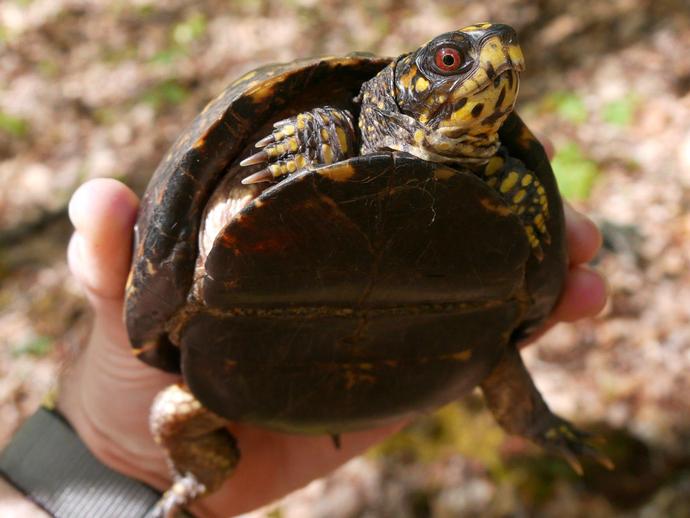
We're reaching into the archives for today's #BenInNature update presented by our friends at ...
April 11, 2021
We're reaching into the archives for today's #BenInNature update presented by our friends at Carter Bank & Trust! The following post was originally published on June 10, 2020. This is a woodland box turtle (Terrapene carolina carolina), and it's one of the most commonly spotted turtles in southwest Virginia. This particular box turtle is almost certainly a male. There are a few different indicators; the easiest to spot is that generally, male box turtles have red eyes while female box turtles have brown or yellowish eyes. Male box turtles also generally have more brightly colored heads than females; the rear edge of the shell tends to flare outward; and males also have a concave spot on their plastron (the underside of the ...
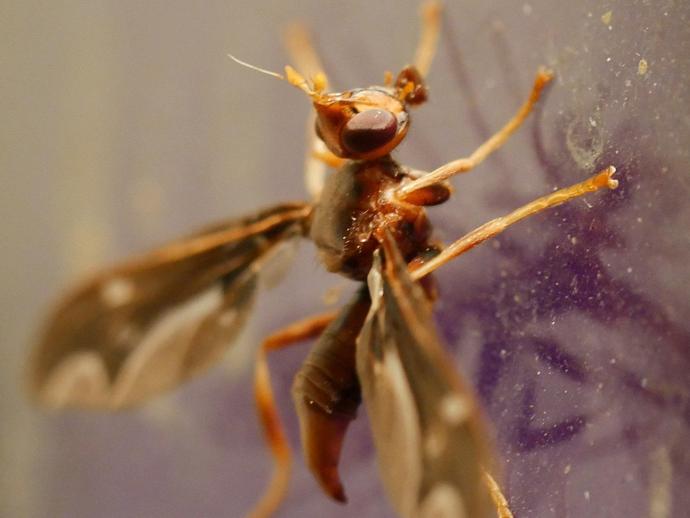
We're reaching into the archives for today's #BenInNature update presented by our friends at ...
April 10, 2021
We're reaching into the archives for today's #BenInNature update presented by our friends at Carter Bank & Trust! The following post was originally published on June 9, 2020. At first glance, this critter might look like some kind of wasp. In fact, it's a fly! This is Pyrgota undata, commonly called the waved light fly. There are about 10 species in the genus Pyrgota, and this one is the most widespread member of the genus. The female of this species flies around looking for May beetles; once she finds one, she lands on its back, causing it to take flight (sometimes she'll even land on one while it's in flight). Once the beetle's elytra (the hard shell that covers its flight wings) are open, the female waved light fly ...
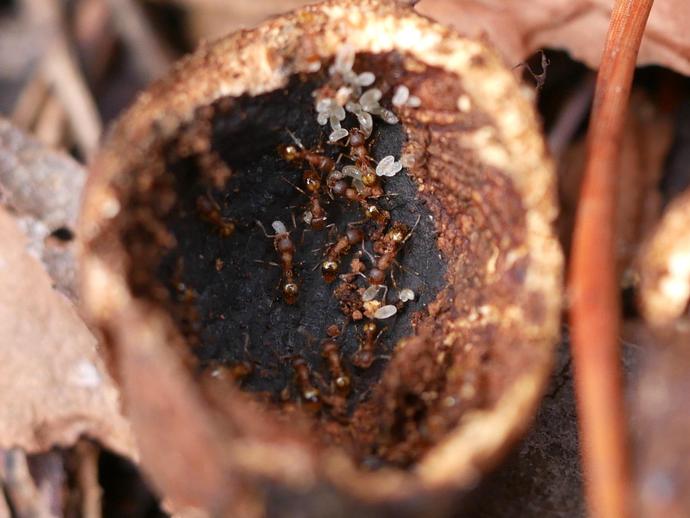
It's time for the Friday edition of #BenInNature presented by our friends at Carter Bank & Trust!
April 9, 2021
It's time for the Friday edition of #BenInNature presented by our friends at Carter Bank & Trust! The other day, VMNH Associate Curator of Invertebrate Zoology and Ant Expert Extraordinaire Dr. Kal Ivanov asked me why I haven't featured any cool ants recently. With that in mind, please enjoy some ants, Kal! These little guys are Temnothorax curvispinosus, also known as acorn ants. These tiny ants are fairly common in the eastern U.S. At first glance, you might assume that these ants have ventured away from their nest to gather up the remains of the nut meat inside this old hickory nut shell. However, what we're actually looking at right now is the nest itself! These ants are small enough that their entire colony can ...
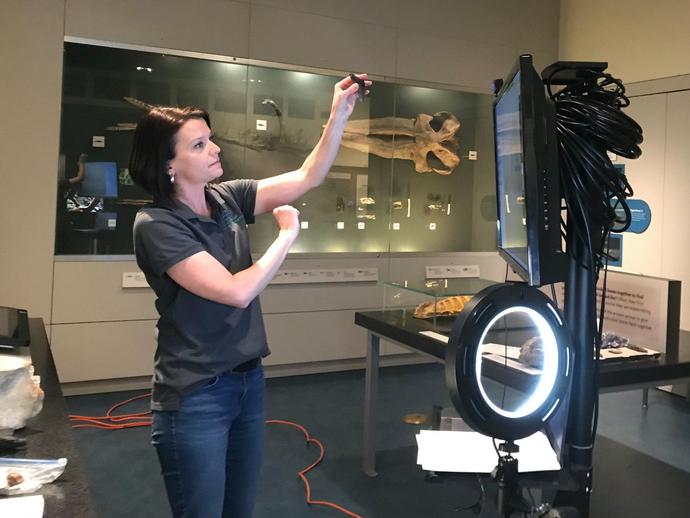
This past week ...
April 9, 2021
This past week, VMNH teamed up with the The BF Yancey Community Center in Albemarle County, Virginia to present "Virtual Science Explosion Week"! Through the partnership, VMNH educators were stationed inside the museum's exhibit galleries to provide a variety of live, virtual programs to the public free of charge! While the programming was meant to coincide with Spring Break Week for Albemarle County Schools, the programs were available to everyone. Here, VMNH Education Manager Christy Deatherage was inside the museum's Uncovering Virginia exhibit to conduct the "Unsolved Mysteries" program. Participants viewed fossils from an active dig site along the Fall Line north of Richmond to answer the mystery of why fossils of ...
We're going under the sea for this week's episode of "Museum Minute" ...
April 9, 2021
We're going under the sea for this week's episode of "Museum Minute", as VMNH Education Manager Christy Deatherage highlights the museum's display of sea urchins inside the Harvest Foundation Hall of Ancient Life! Planning to visit the museum tomorrow? Be sure to stop by the Hall of Ancient Life this Saturday (4/10/21) for a special display table featuring additional sea urchins and other marine invertebrate specimens not normally on display inside the exhibits! The drop-by display is available from 10 to noon and 1 to 3 p.m. this Saturday and is included in the price of admission. ABOUT MUSEUM MINUTE The Virginia Museum of Natural History has a spectacular assortment of displays within its exhibit galleries! Some ...
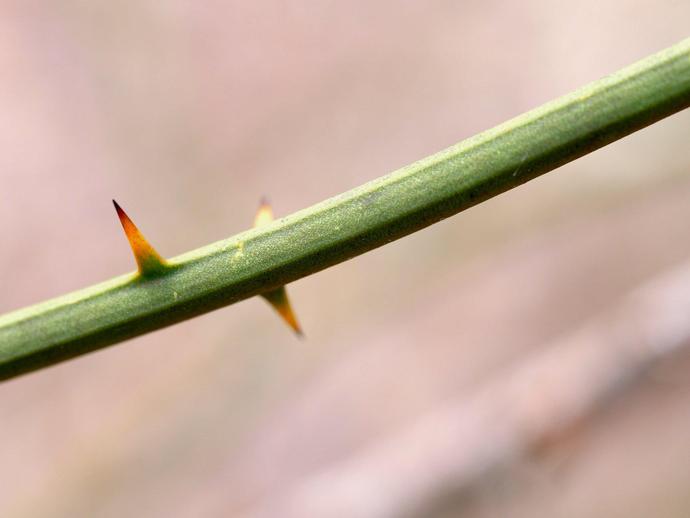
Ben here with today's edition of #BenInNature presented by our friends at Carter Bank & Trust!
April 8, 2021
Ben here with today's edition of #BenInNature presented by our friends at Carter Bank & Trust! Ahh, Smilax, my old foe; tearer of pants, scratcher of arms, inspirer of swear words. If you spend time out in the woods in southwest Virginia, you're probably intimately familiar with the genus Smilax, which contains flowering vines that are covered in thorns and grow heart-shaped leaves. This particular plant is probably Smilax bona-nox, also known as catbrier, saw greenbrier, and "tramp's trouble." I most often find Smilax growing out in the woods, usually climbing up trees and blocking paths, but if left to its own devices, it can form dense shrubs that coalesce into nearly-impenetrable thickets. It flowers in May and June ...
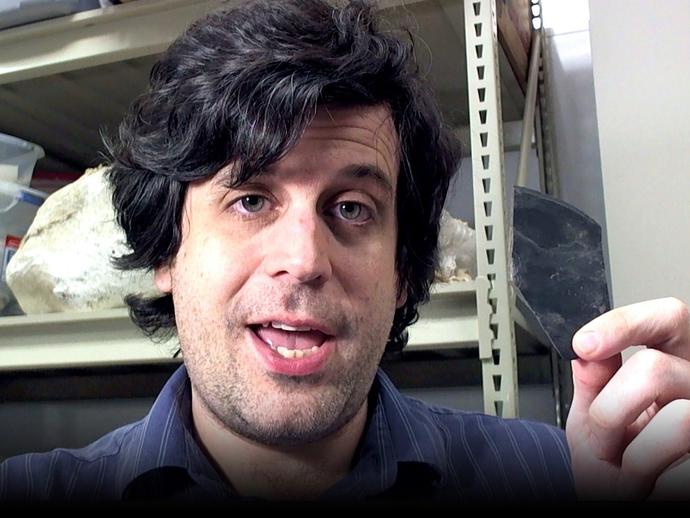
Our planet has an incredible story to tell and VMNH Assistant Curator of Paleontology Dr
April 8, 2021
Our planet has an incredible story to tell and VMNH Assistant Curator of Paleontology Dr. Adam Pritchard helps share it through his original social media video series, "Tales of Ancient Life"! In this series, which can be found on the VMNH Facebook page, Dr. Pritchard uses spectacular fossils and other scientific specimens from the museum's paleontology collections to highlight the wonders of earth's ancient past in ways that are relevant to a wide variety of ages. This highly popular social media series began in Spring 2020 as a way to continue connecting with audiences who were no longer able to visit the museum due to the pandemic. As the health situation continues to improve and the museum begins to gradually return to ...
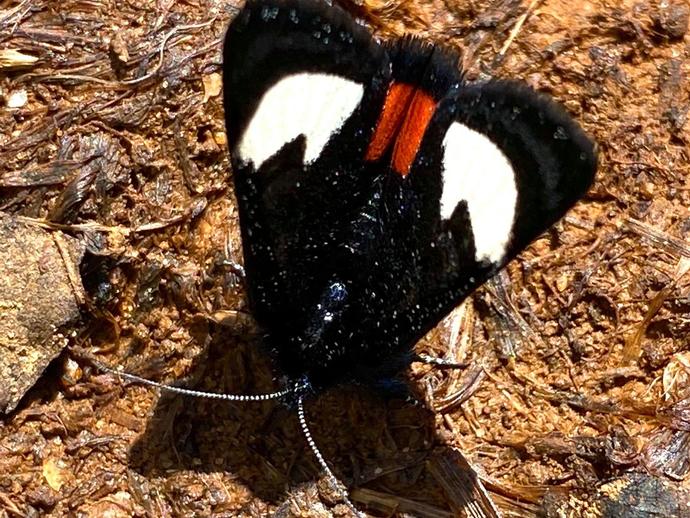
Ben here with the Wednesday edition of #BenInNature presented by our friends at Carter Bank & ...
April 7, 2021
Ben here with the Wednesday edition of #BenInNature presented by our friends at Carter Bank & Trust! I'm always excited to find a cool new moth that I'm unfamiliar with, and this is a pretty neat one! While it may look like a small butterfly, this is actually Psychomorpha epimenis, also known as the grapevine epimenis moth! These moths can be found on the wing in the eastern half of the U.S. from late March through early May, and they're active during the day. Interestingly, they're the only species within the genus Psychomorpha (which kind of sounds like a long-lost 1980s arcade game), although there are two subspecies, one of which is found only in Florida and has a larger red hindwing patch than the more common ...
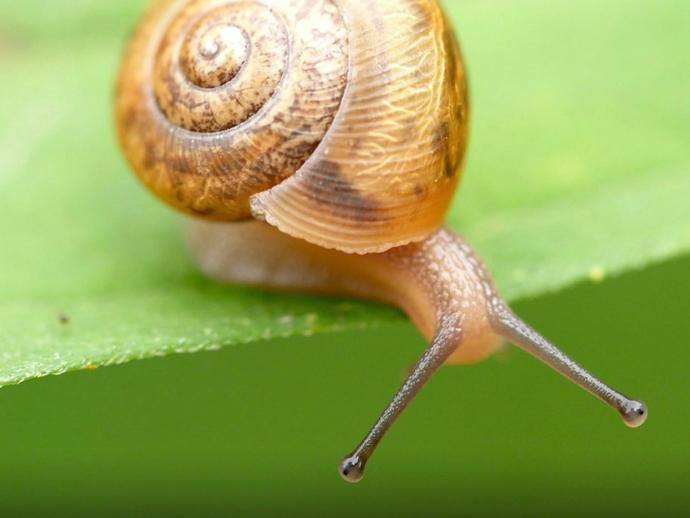
#BenInNature follows VMNH Administrator of Science Ben Williams as he ventures outdoors to ...
April 7, 2021
#BenInNature follows VMNH Administrator of Science Ben Williams as he ventures outdoors to record snapshots of the unique sights that can be found in the natural world. From land snails, to the intimidating (yet, largely harmless) Wolf spider, Williams provides intriguing facts and unique humor to highlight the wide diversity of flora and fauna found within the Commonwealth. This highly popular social media series began in March 2020 as a way to continue connecting with audiences who were no longer able to visit the museum due to the pandemic. As the health situation continues to improve and the museum begins to gradually return to normal operations, #BenInNature will continue on! However, content such as this would not ...
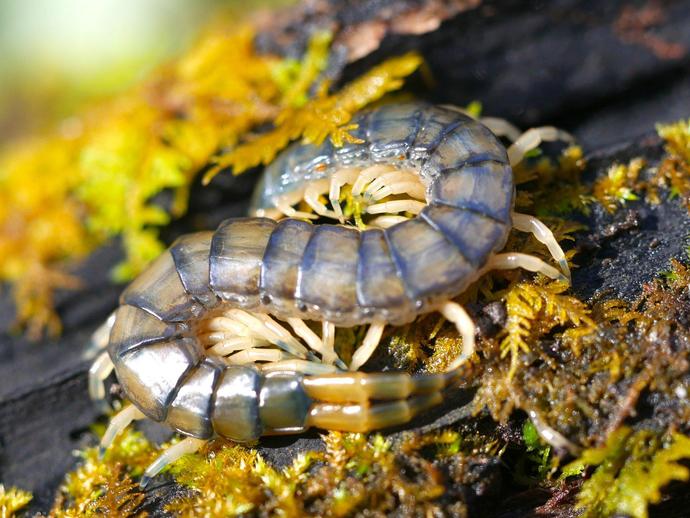
It's time for the Tuesday edition of #BenInNature presented by our friends at Carter Bank & Trust!
April 6, 2021
It's time for the Tuesday edition of #BenInNature presented by our friends at Carter Bank & Trust! I'll admit, centipedes tend to fall on the "nightmare-inducing" end of the arthropod spectrum. Between their many legs, their ability to move like the wind, and their painful bites, centipedes are best appreciated from a safe distance. However, with the right kind of eyes, they can be quite beautiful; case in point, Hemiscolopendra marginata, the Eastern bark centipede! Topping out at around three inches in length, the Eastern bark centipede is one of Virginia's largest centipedes, and its bluish coloration is quite striking! Most centipedes are predators, and while a bite from an Eastern bark centipede shouldn't cause ...
Despite the pandemic ...
April 5, 2021
Despite the pandemic, the museum's Research & Collections team has remained extremely active inside the labs and collections areas, while also developing new virtual science programming for audiences no longer able to visit the museum due to the ongoing health situation. However, this success would not have been possible without the support of all of our museum friends and constituents! Throughout April, the museum is conducting the 2021 Spring Fund Drive initiative as a result of being unable to host the annual, in-person "Grapes & Grains" fundraising gala - the VMNH Foundation's largest fundraising event each year - due to the ongoing health restrictions. As the museum looks to continue offering its stellar lineup of ...
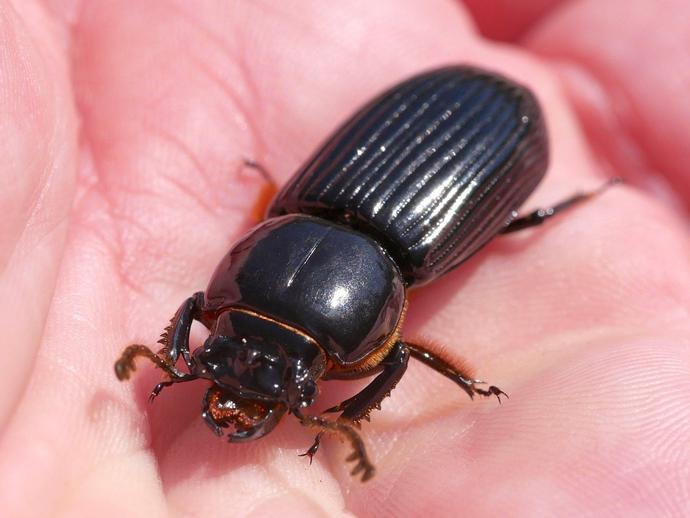
It's time for today's edition of #BenInNature presented by our friends at Carter Bank & Trust!
April 5, 2021
It's time for today's edition of #BenInNature presented by our friends at Carter Bank & Trust! This little guy is a horned passalus (Odontotaenius disjunctus), also known as the patent-leather beetle or bess beetle! These beetles are pretty stout, measuring as much as an inch and half long and capable of pulling 50 times their own weight. But when it comes to the horned passalus' quirks and features, that's just barely scratching the surface! If you want to find one of these beetles, your best bet is to look under a rotting hardwood log. These beetles are saproxylic, which is a lightning-round spelling bee word that means they eat wood. What's remarkable is that they live in family groups, something that's not often seen ...

We're reaching into the archives for today's #BenInNature update presented by our friends at ...
April 4, 2021
We're reaching into the archives for today's #BenInNature update presented by our friends at Carter Bank & Trust! The following post was originally published on June 8, 2020. If, like me, you enjoy sitting on a back porch in the evenings, you've probably seen a ton of beetles from this genus. This beetle belongs to the genus Phyllophaga, which contains more than 900 species! They're most commonly referred to as "May beetles" because they first begin emerging around May. A May beetle's lifecycle lasts about a year. The larvae are known as "white grubs" and are considered a lawn pest since they like to eat grass roots, while the adults eat foliage and can cause a fair amount of damage to trees and plants when they emerge ...
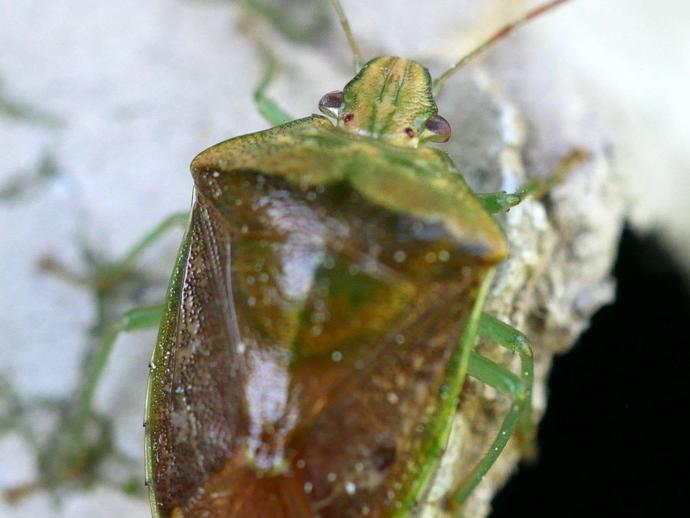
We're reaching into the archives for today's #BenInNature update presented by our friends at ...
April 3, 2021
We're reaching into the archives for today's #BenInNature update presented by our friends at Carter Bank & Trust! The following post was originally published on June 7, 2020. The brown marmorated stink bug that we looked at yesterday casts a large shadow, but there are many, many other species of stink bugs around the world. Stink bugs (also known as shield bugs) belong to the family Pentatomidae, and there are more than 4,700 recognized species! This particular stink bug, according to VMNH Associate Curator of Invertebrate Zoology Dr. Kal Ivanov, belongs to the genus Banasa. Many species of stink bugs have striking coloration; with the right kind of eyes, they can be quite beautiful! Unfortunately, there are a ...
Often overlooked inside the Hall of Ancient Life ...
April 2, 2021
Often overlooked inside the Hall of Ancient Life, this petrified log is from a redwood tree that was growing near Quantico, Virginia around 100 million years ago! Today, it takes the spotlight in this latest episode of "Museum Minute"! ABOUT MUSEUM MINUTE The Virginia Museum of Natural History has a spectacular assortment of displays within its exhibit galleries! Some displays are unforgettable, while others don't always get the attention they deserve. Through the original series "Museum Minute", museum educators highlight various displays throughout the exhibit galleries, while providing intriguing facts you may not have known. "Museum Minute" is made possible thanks to VMNH Corporate Partners Carter Bank & Trust (www. ...
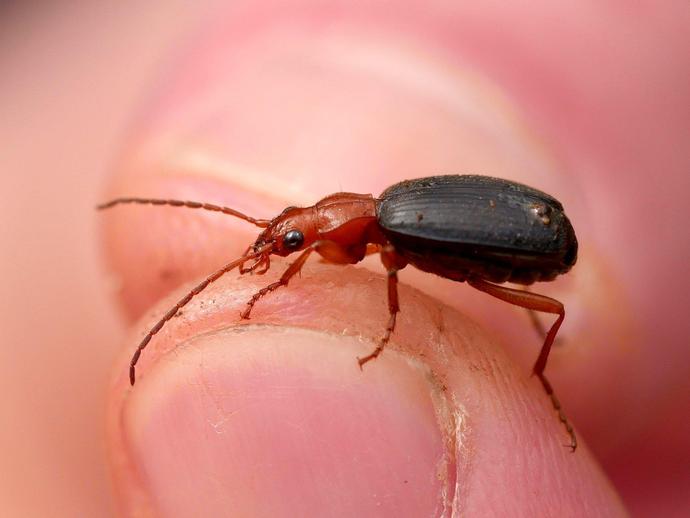
It's time for today's edition of #BenInNature presented by our friends at Carter Bank & Trust!
April 2, 2021
It's time for today's edition of #BenInNature presented by our friends at Carter Bank & Trust! Here's a cool beetle to close out the week: a bombardier beetle, most likely Brachinus americanus! At first glance, this beetle may not look like anything special. Looks can be deceiving, however, as bombardier beetles have one of the most remarkable chemical defenses in the animal kingdom! When threatened, they can spray a near-boiling chemical solution from the tip of the abdomen with enough power to incapacitate or even kill an attacking insect! Kind of reminds me of a friend of mine... How does this work? These remarkable beetles have evolved to have two chambers inside the abdomen. One contains hydrogen peroxide, and the ...
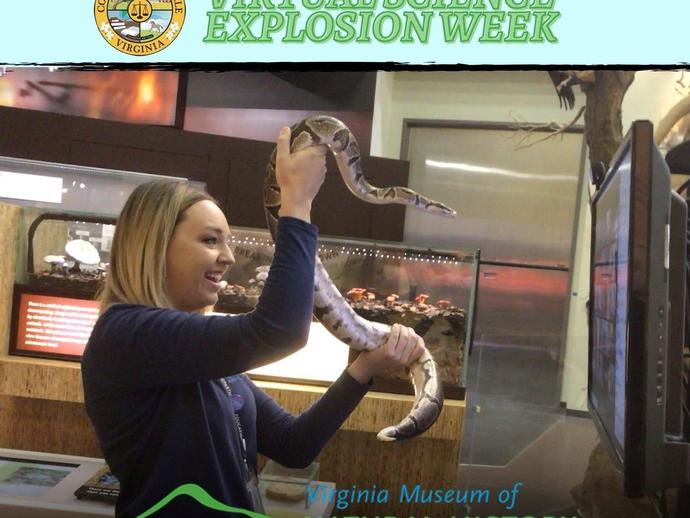
The BF Yancey Community Center in Albemarle County ...
April 1, 2021
The BF Yancey Community Center in Albemarle County, Virginia and VMNH have teamed-up to present "Virtual Science Explosion Week"! From April 5th through 8th, VMNH educators will be providing a variety of live, virtual programming free of charge! While the programming is meant to coincide with Spring Break Week for Albemarle County Schools, the programs are available to anyone who wishes to participate! Pre-registration is required for each program and a full listing of available programs, times, and recommended ages can be found at www.vmnh.net/education/science-explosion-week!
Archives
2025
2024
2023
2022
2021
2020
2019
2018
2017
2016
2015
2014
2013
2012
2011
2010
2009
2008

Please Visit Us Soon
Hours:
Tuesday - Saturday: 10am - 4pm
Sunday: Noon to 4pm (Memorial Day Weekend through Labor Day Weekend only)
Monday: Closed
Admission:
$12 for ages 18-59
$6 for ages 3-17, seniors 60+, and college students
FREE for children under 3, museum members, members of ASTC Passport participating institutions, and EBT cardholders
My 4 year old son loves going to the museum. The exhibits are educational, interactive and kid-friendly.
”

 Hours & Admissions
Hours & Admissions Directions
Directions